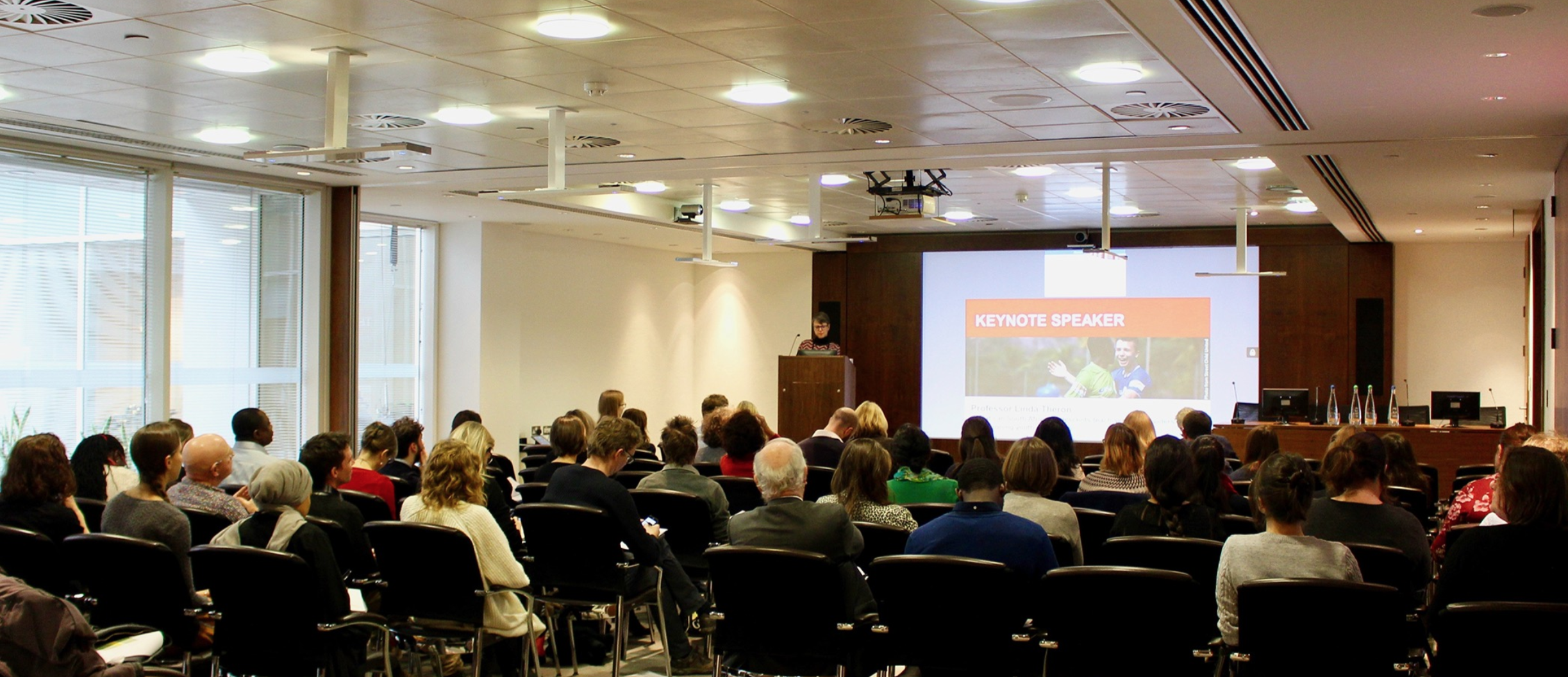By Jetske van Dijk

Keynote speaker Professor Linda Theron on youth resilience in South Africa. Image credit: Consortium for Street Children
On 9th November 2017, the Cities for Children team attended the Consortium for Street Children (CSC) Annual Research Conference, I BEND BUT I DON’T BREAK: Exploring Street-Connected Children’s Resilience.
The day involved panel discussions and presentations of academic research, as well as hands-on workshops where practitioners shared their experiences of working with children in street situations across the world. One thing that really stood out to me in the discussions was the message of hope carried by children, in spite of the odds against them on the streets.
Defining resilience
To me, resilience means the capacity to bounce back from adversity – although as it turns out, the term is widely contested, with some people only including positive coping mechanisms and others also including negative ones. Some experts argue that resilience comes from within the child, while others look at factors such as family and the wider community.
My colleague, Alizeh Hameed, came away with the following take on definitions:
The participants and attendees of the conference repeatedly highlighted the importance of defining ‘resilience’ before donors decide to define it for those on the frontlines…Activists, academics and practitioners need to own the term ‘resilience’ before it is globally defined as something different, rendering current and ongoing work irrelevant and putting some of the children in need of support outside of the “project scope.”
Each session yielded new insights on what the term could mean, but the theme of hope as resilience seemed to run through each one.
Peer support
During the first panel on “Understanding and Experiences of Resilience on the Streets,” Alfred Ochaya from SALVE International talked about his work in Uganda. One of the most powerful pieces of advice that children gave each other in one of his group sessions was:
“Don’t lose hope. No bad condition is permanent.”
Alfred told us that children are aware of the difficulties in their situations, but also actively try finding ways of getting out of them: they go to school, play with other children, and make arrangements with market traders who help them save money.
In an afternoon workshop, academics Dr Andrew Stevenson and Dr Jeremy Oldfield showed a documentary about their research project in Guatemala City. For this they talked to children living and/or working in La Terminal, a massive marketplace and transport hub. The children had formed close relationships with others living in La Terminal and were working together to try make their lives better.
“Dawn after dusk”
The last panel was a powerful discussion focused on sexual violence in the context of the street. Survivors spoke about “Dawn after dusk”, and the resurgence of hope after enduring the horror of sexual violence. Helen Veitch from Children Unite spoke about hope as a coping mechanism for child domestic workers in Nepal who had been sexually abused. They set goals they could aspire to, which made it possible for them to endure hardship. Again, I was astounded by the strength of the young people, having the resilience to cope with difficult situations while exposed to the risks of urban poverty.
“Happy memories build resilience”
It is so easy for adults to think that children cannot do a lot, while actually they have immense individual potential, and inspiring capacity to retain positive outlooks. The research conference really confirmed for me that Cities for Children can play a hugely important role for children facing challenges on the streets, by offering them the opportunity to play and feel safe.
As Madeeha, our founder, says, “Happy memories build resilience.” By giving them the tools to keep coping and hoping, we can help children build the brighter future of which they dream.

